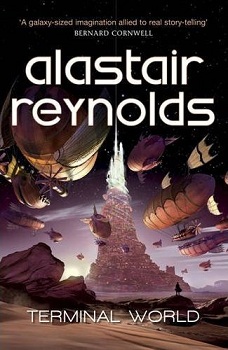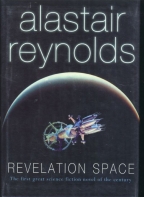Alastair Reynolds, “The Last Log of the Lachrimosa.” Subterranean, Summer 2014.
This is set in the same universe as Reynolds’ first novel, Revelation Space and sequels, another one of those stories where a dysfunctional crew stumbles over an alien secret unimaginably old. Well written as anything Reynolds has done, but it reminded me a bit too much of an average Star Trek episode.
Mary Rickert, “The Mothers of Voorhisville.” Tor.com, April 30, 2014.
This is a stupid story about stupid people doing the most stupid thing possible because they have to adhere to the conventions of genre fiction, so nobody ever talks to anybody else until it’s too late. It’s mired in gender essentialism and goes on for way too long.
In Voorhisville a mysterious man driving a hearse seduces and impregnates most of the town’s women and when their children are born they have wings. Everybody is convinced nothing good can come from revealing their children, who do seem to have some mysterious powers and while those are troubling, mother love trumps everything. Therefore they all responds the same by keeping it a secret and from there things meander to their foregone, blood soaked conclusion in a Waco style standoff. All of which told through a sort of diary supposedly put together at the end of the siege, with the mothers acting as the narrator in turns.
The problem I have with this is that this is a short story spun out into a novella, with lots of padding and local colour that doesn’t really add anything to the story. In a short story, it doesn’t matter so much that each of the mothers respond exactly the same to their baby boy developing wings, but here there’s room to notice. This could’ve actually worked better as a novel, where there’s more room to develop the characters beyond “town floozy” or “rebellious teenager” and the threat of the babies could’ve been build up better.
A bigger problem is that whole idea of mother love trumping everything else and women being made crazy through pregnancy. It feels old fashioned and slightly insulting. You could argue that it was because of the nature of the pregnancies, but that wasn’t established well enough for my liking.
Sofia Samatar, “How to Get Back to the Forest.” Lightspeed, March 2014.
Now this is a much better example of body horror fiction, one that can achieve in a tenth of the words the sort of revulsion Rickert was going for. It starts with a group of girls on campin the middle of the night herded to the bathroom to puke because one girl believes that way you can puke up a bug that regulates your emotions and it builds up from there. It’s a smart enough story to only hint at what’s going on, not have easy answers and that’s what makes it uncomfortable. There’s also an undercurrent of queerness running through it, a sort of counter current to the surface emotions in the story.

